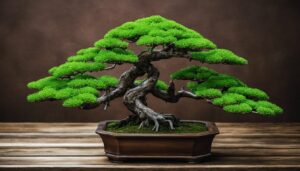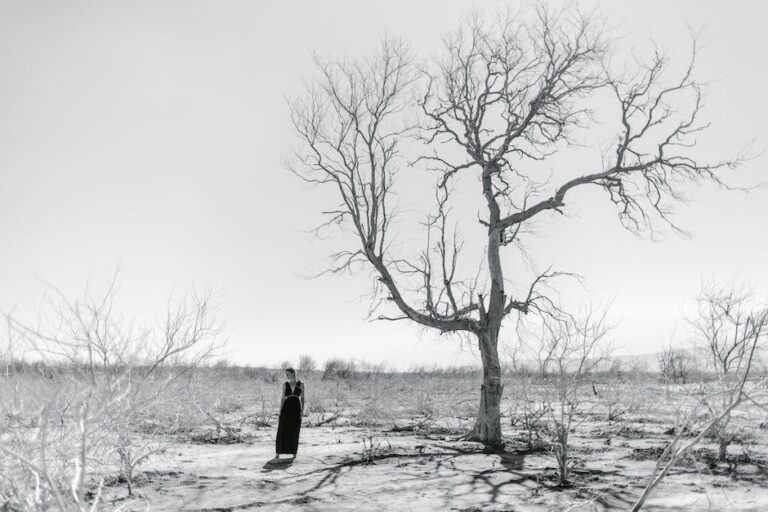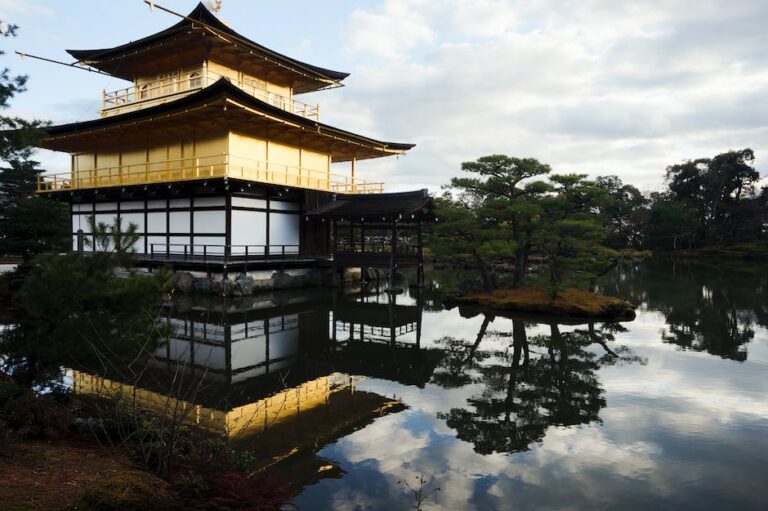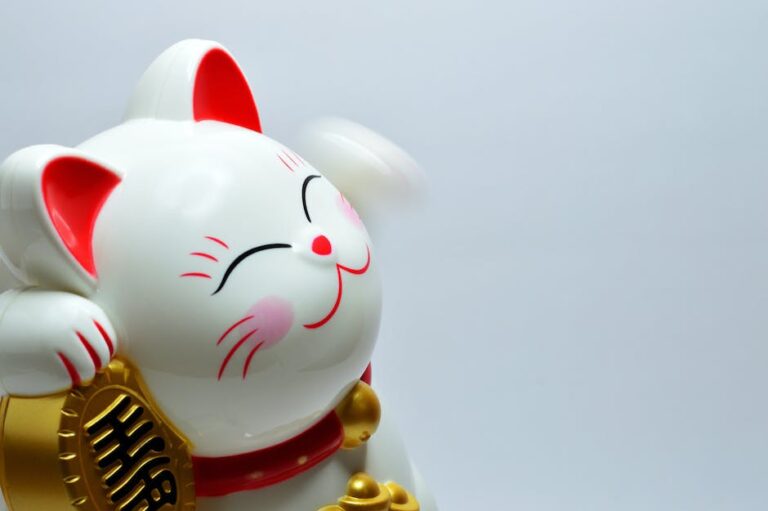Are Bonsai Trees Man Made
Have you ever wondered about the origins of those intricate miniature trees known as bonsai?  Well, prepare to dive into the fascinating world of these meticulously crafted wonders.
Well, prepare to dive into the fascinating world of these meticulously crafted wonders.
In this article, we explore the question: ‘Are bonsai trees man made?’ Delve into the history, techniques, and cultural significance of bonsai, as we unravel the secrets behind these masterpieces of horticulture.
Get ready to discover the captivating artistry and conservation efforts behind these natural treasures.
Key Takeaways
- Bonsai trees have both natural and artificial variations, with natural bonsai trees grown from seeds or cuttings and exhibiting irregular growth patterns, while artificial bonsai trees are manufactured to resemble natural ones and have uniform foliage and growth patterns.
- Natural bonsai trees require more time and effort to cultivate but offer a sense of connection with nature, promoting relaxation and stress relief.
- Bonsai trees originated in ancient China and Japan, with the Chinese influencing early bonsai techniques and the Japanese further refining them.
- Bonsai cultivation is deeply rooted in Japanese culture and aesthetics, representing elements such as strength, beauty, and the passage of time, and evoking a sense of tranquility and contemplation.
The History of Bonsai Trees
The history of bonsai trees dates back to ancient China and Japan, where they were first cultivated and shaped by skilled gardeners. Bonsai tree evolution can be traced back over a thousand years, with the practice originating in China during the Tang Dynasty.
The ancient bonsai techniques were refined and further developed in Japan during the Heian period. These techniques involved carefully pruning and wiring the trees to achieve the desired shape and size. The art of bonsai was highly respected and considered a symbol of harmony between humans and nature.
Over time, bonsai trees became highly sought-after and were seen as a reflection of the gardener’s skill and artistic expression. Today, bonsai trees continue to be admired and cultivated worldwide, showcasing the enduring legacy of these ancient techniques.
Bonsai Techniques and Training Methods
To properly shape and maintain a bonsai, you’ll need to learn various techniques and training methods. Bonsai pruning techniques are essential for maintaining the size and shape of the tree, while bonsai styling methods allow you to create unique and artistic designs. Pruning involves carefully trimming the branches and foliage to maintain the desired form and proportions of the bonsai. Styling methods, on the other hand, include techniques such as wiring, bending, and grafting to shape the tree according to your vision.
To give you a better idea of these techniques and methods, let’s take a look at the following table:
| Bonsai Pruning Techniques | Bonsai Styling Methods |
|---|---|
| Pinching | Wiring |
| Thinning | Bending |
| Pruning | Grafting |
| Leaf trimming | Carving |
| Root pruning | Layering |
The Cultural Significance of Bonsai Trees
When exploring the cultural significance of bonsai trees, it’s important to delve into their historical origins and influences.
Bonsai trees can be traced back to ancient China and Japan, where they were cultivated as miniature representations of nature. This art form was heavily influenced by the Zen Buddhist philosophy, which emphasized simplicity and harmony with nature.
Additionally, bonsai trees hold deep symbolism and artistic expression. They are often used to represent various elements such as strength, beauty, and the passage of time.
Historical Origins and Influences
Did you know that bonsai trees have historical origins dating back centuries and have been influenced by various cultures and traditions?
The art of bonsai originated in China over a thousand years ago and was later introduced to Japan. The Chinese influenced the early techniques of dwarfing and shaping trees, while the Japanese further refined these techniques and developed their own unique styles.
Over time, bonsai spread to other parts of Asia and the world, leading to regional variations in bonsai styles. For example, in Japan, the emphasis is on natural-looking, asymmetrical compositions, while in China, the focus is on symbolism and balance.
In modern times, bonsai techniques have been influenced by Western horticulture and design principles, resulting in new approaches and styles. These influences have shaped the evolution of bonsai as an art form, creating a rich tapestry of techniques and styles from different cultures.
Symbolism and Artistic Expression
The art of bonsai incorporates various symbols and allows for artistic expression through the careful shaping and arrangement of miniature trees. Bonsai trees are not just small plants in pots; they are living representations of nature and hold deep symbolism.
Each aspect of a bonsai tree, from its shape and size to the arrangement of its branches, can represent different elements of nature or evoke specific emotions. For example, an upright tree with a strong, sturdy trunk may symbolize strength and resilience, while a cascading tree with gracefully drooping branches may represent tranquility and serenity.
Bonsai cultivation is also considered a form of meditation, as it requires patience, focus, and a deep connection with nature. By tending to a bonsai tree, one can find inner peace and harmony.
Transitioning to the next section, let’s explore the difference between natural and artificial bonsai trees.
Natural Vs. Artificial Bonsai Trees
You can easily tell the difference between natural and artificial bonsai trees by examining their foliage and growth patterns.
Natural bonsai trees are grown from seeds or cuttings and are nurtured over many years to develop their unique shape and form. They exhibit natural characteristics such as irregular growth patterns, varying leaf sizes, and imperfections in the bark.
Artificial bonsai trees, on the other hand, are manufactured to resemble their natural counterparts. They are often made from plastic or silk materials and have uniform foliage and growth patterns.
While natural bonsai trees require more time and effort to cultivate, they offer several benefits. They provide a sense of connection with nature, promote relaxation and stress relief, and enhance the aesthetic appeal of any indoor or outdoor space.
Famous Bonsai Trees and Their Creators
In this discussion, you will explore the world of notable bonsai artists and the historical significance of bonsai.
Notable bonsai artists have played a crucial role in shaping the art form and have created breathtaking bonsai trees that have captivated audiences worldwide.
Understanding the historical significance of bonsai will provide insight into its origins, cultural significance, and evolution over time, shedding light on its enduring appeal and continued relevance in today’s world.
Notable Bonsai Artists
Some of the most well-known bonsai artists have created breathtaking miniature trees. These artists have showcased their talent and skill in notable bonsai exhibitions all over the world.
One such artist is Masahiko Kimura, who is renowned for his unique and innovative designs. He pushes the boundaries of traditional bonsai techniques, creating stunning tree compositions that defy expectations.
Another notable bonsai artist is John Naka, who is considered a pioneer in the bonsai community. His work is characterized by meticulous attention to detail and a deep understanding of the natural growth patterns of trees.
When it comes to caring for bonsai trees, these artists emphasize the importance of proper watering, pruning, and soil maintenance. By following their expert advice, you can ensure that your bonsai tree thrives and remains healthy.
Transitioning into the next section on the historical significance of bonsai, it is important to note that these artists have not only contributed to the art form, but also preserved its rich heritage.
Historical Significance of Bonsai
Experiencing the historical significance of bonsai allows you to appreciate the art form’s deep cultural roots. Bonsai tree cultivation dates back over a thousand years and has evolved into a refined practice that combines horticulture, artistry, and philosophy.
To truly understand the historical significance of bonsai, visualize the following:
- Imagine a small, meticulously pruned tree, carefully shaped to resemble a full-sized tree.
- Picture the intricate details of the miniature leaves and delicate branches, conveying the essence of an ancient, towering tree.
- Envision the bonsai displayed on a traditional Japanese stand, surrounded by a serene garden, evoking a sense of tranquility and harmony.
These visualizations capture the historical significance of bonsai, showcasing the dedication and meticulousness required to create these living works of art.
Understanding the cultural roots and aesthetics of bonsai is crucial in appreciating its historical value. This appreciation also highlights the importance of bonsai preservation and conservation efforts, ensuring the longevity of this ancient art form.
Bonsai Preservation and Conservation Efforts
You can help preserve and conserve bonsai trees by supporting organizations dedicated to their protection.
Bonsai tree preservation is crucial to ensure the survival of these unique and culturally significant plants. Bonsai trees require specialized care and attention to thrive, and efforts are being made to safeguard their existence.
Conservation efforts aim to protect bonsai trees from threats such as habitat destruction, illegal trade, and disease. Organizations work towards creating awareness, conducting research, and implementing conservation strategies to safeguard these miniature trees.
They also provide education and training to enthusiasts and bonsai growers to promote sustainable practices. By supporting these organizations, you can contribute to the preservation and conservation of bonsai trees, ensuring that these living works of art continue to be enjoyed for generations to come.
Conclusion
In conclusion, bonsai trees have a rich history and cultural significance. The techniques and training methods used to create and maintain these miniature masterpieces have been honed over centuries. Whether natural or artificial, the creation of bonsai trees requires dedication and skill.
As we appreciate the beauty of bonsai trees, it is important to consider the efforts being made to preserve and conserve them for future generations. Bonsai trees are not just objects of admiration, but also living organisms that require care and attention.
So, the next time you marvel at a bonsai tree, take a moment to reflect on the question: can we truly capture the essence of nature in a miniature form?





